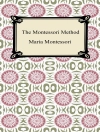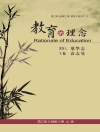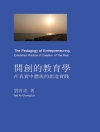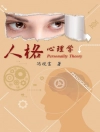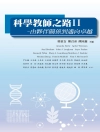Properties of Energy for Grades 3–5 from Hands-On Science for British Columbia: An Inquiry Approach completely aligns with BC’s New Curriculum for science. Grounded in the Know-Do-Understand model, First Peoples knowledge and perspectives, and student-driven scientific inquiry, this custom-written resource:
- emphasizes Core Competencies, so students engage in deeper and lifelong learning
- develops Curricular Competencies as students explore science through hands-on activities
- fosters a deep understanding of the Big Ideas in science
Using proven Hands-On features, Properties of Energy for Grades 3–5 contains information and materials for both teachers and students including: Curricular Competencies correlation charts; background information on the science topics; complete, easy-to-follow lesson plans; digital reproducible; student materials; and materials lists.
Innovative new elements have been developed specifically for the new curriculum:
- a multi-age approach
- a five-part instructional process—Engage, Explore, Expand, Embed, Enhance
- an emphasis on technology, sustainability, and personalized learning
- a fully developed assessment plan for summative, formative, and student self-assessment
- a focus on real-life Applied Design, Skills, and Technologies
- learning centres that focus on multiple intelligences and universal design for learning (UDL)
- place-based learning activities, Makerspaces, and Loose Parts
In Properties of Energy for Grades 3–5 students investigate properties of energy. Core Competencies and Curricular Competencies will be addressed while students explore the following Big Ideas:
- The motion of objects depends on their properties.
- Light and sound can be produced and their properties can be changed.
- Forces influence the motion of an object.
Download the FREE digital resources (image banks and reproducibles) that accompany this book by following the instructions printed on the first page of the Appendix.
İçerik tablosu
- Introduction to Hands-On Science 5
- About Hands-On Science 5
- Format of Hands-On Science 5
- The Multi-Age Approach 6
- Inquiry and Science 6
- The Goals of Science Education in British Columbia 6
- Hands-On Science Principles 7
- Cultural Connections 8
- Indigenous Perspectives and Knowledge 9
- References 12
- How to Use Hands-On Science in Your Classroom 13
- Multi-Age Teaching and Learning 13
- Module Overview 13
- Talking Circles 16
- Multiple Intelligences Learning Centres 17
- Icons 18
- Makerspaces 19
- References 20
- Curricular Competencies: How to Infuse Scientific Inquiry Skills and Processes Into Lessons 21
- Observing 21
- Questioning 21
- Exploring 21
- Classifying 22
- Measuring 22
- Communicating, Analyzing, and Interpreting 23
- Predicting 25
- Inferring 25
- Inquiry Through Investigation and Experimentation 25
- Inquiry Through Research 26
- Addressing Students’ Literacy Needs 27
- Online Considerations 27
- References 28
- The Hands-On Science Assessment Plan 29
- Student Self-Assessment 29
- Formative Assessment 31
- Summative Assessment 32
- Indigenous Perspectives on Assessment 33
- Connecting Assessment to Curricular Competencies 33
- Module Assessment Summary 34
- Important Note to Teachers 34
- References 34
- Assessment Reproducibles 35
- What Are the Properties of Energy? 59
- About This Module 60
- Curriculum Learning Framework: What We Know and Understand 65
- Curricular Competencies Correlation Chart: What We Do 66
- Resources for Students 68
- 1 What Do We Observe, Think, and Wonder About Energy in Nature? 72
- 2 What Can We Learn About Energy Through Stories? 80
- 3 What Do We Know About Energy? 85
- 4 What Is Heat Energy (Thermal Energy)? 93
- 5 How Is Thermal Energy Transferred? 99
- 6 How Is Energy Transformed? 106
- 7 What Do We Know About Forces and Machines? 111
- 8 How Does a Lever Make Work Easier? 116
- 9 How Do Wheels and Axles Work? 124
- 10 How Do Gears Make Work Easier? 130
- 11 What Can We Learn About Gears and Direction of Movement? 135
- 12 How Do Pulleys Make Work Easier? 141
- 13 How Does an Inclined Plane Make Work Easier? 148
- 14 How Does a Screw Make Work Easier? 152
- 15 How Does a Wedge Make Work Easier? 156
- 16 Inquiry Project: How Can We Show Our Learning About Energy and Simple Machines? 160
- Appendix: Image Banks 163
- About the Contributors 173
Yazar hakkında
Melanie Nelson is from the In-SHUCK-ch and Stó:loˉ Nations, and has experience teaching kindergarten through grade 12, as well as adults in the Lower Mainland of British Columbia. She has taught in mainstream, adapted, modified, and alternate settings, at the classroom, whole school, and district levels. Trained as an educator in science, Melanie approaches Western science through an Indigenous worldview and with Indigenous ways of knowing. Her Master of Arts thesis explored the experience of Indigenous parents who have a child identified as having special needs in school, and she is currently completing a Doctor of Philosophy in School Psychology at the University of British Columbia.


